Chinese Hungry Ghost Festival in Chiang Mai ~ เทศกาลสารทจีน ~ 中元节 ~ Zhong Yuan Jie

Pung Tao Kong Temple in Chiang Mai, Thailand (Image from the 180books.org Photo Collection by George Edward Giunca)
The moon was shining so brightly last night that it awakened me. It was a massive glowing disk in the sky, and I was reminded that it was the seventh Lunar month on the Chinese calendar; time for the Hungry Ghost Festival. Taoist believe that during this month, the gates of heaven and hell are flung open, and the spirits travel to Earth to find food and perhaps seek revenge on those behaving badly. This is the time of year when Chinese families gather together and set elegant tables full of delicious food to feed and honor their deceased ancestors, both at home and in the community temples and shrines. I like the way the ancestors are remembered in this fashion, and I enjoy reading about the taboos that could result in ghostly encounters or worse if transgressed.
Since Chiang Mai is relatively close to China, we decided to venture out into the city and try to find some ceremonies to photograph. Come along with us and I’ll fill you in on these fascinating customs and tell you how to avoid making a ghost angry or tempting him to remain on Earth with you.
เกิดความอยากรู้อยากเห็นขึ้นมาค่ะว่า ชาวจีนเดินทางไปทำมาค้าขายอาศัยอยู่ทั่วทุกมุมโลก แล้วจังหวัดเชียงใหม่ก็ไม่ไกลจากสาธารณรัฐประชาชนจีนสักเท่าไหร่ ต้องมีชาวเชียงใหม่เชื้อสายจีนตั้งรกรากอยู่นี่แน่ๆ เราเลยออกไปดูว่า วันสารทจีน ในเมืองเชียงใหม่มีอะไรน่าสนใจบ้าง
วันสารทจีน มีกำหนดตรงกับวันที่ ๑๕ เดือน ๗ ตามปฏิทินจันทรคติของจีน ซึ่งเดือน ๗ ถือเป็นเดือนที่ประตูยมโลกเปิดให้ดวงวิญญาณบรรพบุรุษมาเยี่ยมเยือนโลกมนุษย์นานราวครึ่งเดือน และในวันสารทจีนชาวจีนหรือผู้มีเชื้อสายจีนจะทำพิธีเซ่นไหว้บรรพบุรุษ เซ่นไหว้วิญญาณเร่ร่อนไร้ญาติ รวมถึงไหว้เจ้าที่เช่นกันทุกครัวเรือน

The main deities of the Pung Tao Kong Temple (Image from the 180books.org Photo Collection by George Edward Giunca)
Pung Tao Kong Shrine: ศาลเจ้าปุงเถ่ากง เชียงใหม่: 清邁老本頭古廟
There’s a Chinatown area in Chiang Mai, near Warorot market, but it was quiet, so we walked across to Kad Ton Lamyai to buy some Chinese treats that are given as offerings. The vendor directed us where there was a small temple close by and it was magnificent.
The Pung Tao Kong Temple, is 140 years old and the oldest Chinese temple in Chiang Mai. It was well decorated with Chinese motives and designs in an explosion of colors. Inside were statues of deities, mythological figures, and guardians such as Guanyin, Caishen, Xuan Tian Shang Di, Hua Tuo Xian Shi (God of Medicine), Dragon King, Di Ji Zhu (Home Spirit Deity), and Men Shen (Guardians of the Door). The attendants were friendly and gave a smile and nod at my request to make photographs.
เราไปแถวตรอกเล่าโจ๊วข้างตลาดวโรรส ที่เรียกว่าเป็นย่านไชน่าทาวน์ของเชียงใหม่ ตอนประมาณ ๘ โมงกว่าๆ ดูเงียบสักนิดเพราะเป็นช่วงเวลาที่เขากำลังไหว้กันที่บ้าน ร้านค้าหลายร้านก็ยังไม่เปิด หรือ อาจจะปิดเนื่องในวันสารทจีน ศาลเจ้าหลังตลาดวโรรสก็มีผู้คนบางตาเช่นกัน เลยเดินข้ามถนนไปฝั่งกาดต้นลำไย แวะซื้อขนมเทียน ขนมปุยฝ้าย และขนมเปี๊ยะ ถามแม่ค้าขายขนมพี่เขาบอกว่ามีอีกศาลหนึ่งตรงถนนไปรษณีย์ เราก็เดินไปตามทางที่พี่เขาบอก ก็เห็นศาลเจ้าไม่ใหญ่ แต่ข้างในสวยยยยยยยยยยยยยยยยยมากกกกกกกกกกกกกกกก ไม่เสียงดังอึกทึก ไม่มีควันธูปโขมงเหมือนที่อื่นๆ และที่นี่ก็ดูสะอาดและเป็นระเบียบเรียบร้อยมาก
ที่นี่คือ “ศาลเจ้าปุงเถ่ากง” เป็นศาลเจ้าเก่าแก่ที่สุดในจังหวัดเชียงใหม่ (อายุ ๑๔๐ ปี) สร้างขึ้นจากแรงศรัทธาของเหล่าบรรพชนชาวจีนโพ้นทะเล มีสถาปัตยกรรมเป็นศิลปะจีนโบราณ ซึ่งเป็นอาคารที่สร้างใหม่แทนหลังเก่าที่เสื่อมโทรมจนยากที่จะบูรณะได้ โดยสร้างในปี พ.ศ. ๒๕๓๙ จากประวัติกล่าวว่าอาคารหลังเดิมคาดว่าสร้างขึ้นในสมัยพระบาทสมเด็จพระจุลจอมเกล้าเจ้าอยู่หัว (รัชกาลที่ ๕) โดยพบตัวเลข ๒๔๑๖ สลักอยู่บนไม้อกไก่ของหลังคา เชื่อว่าน่าจะเป็นปีที่ก่อสร้าง
ภายในตบแต่งตามแบบสถาปัตยกรรมและศิลปกรรมจีน มีองค์ปุงเถ่ากง-ม่า (เจ้าปู่ เจ้าย่า) และเทพเจ้าที่ชาวจีนให้ความเคารพนับถืออีกหลายองค์ คือ ทีตี่แป่บ้อ (เทพยดาฟ้าดิน), กวนอิมเนี่ยเนี้ย (เจ้าแม่กวนอิม), ไช้ซิ้งเหล่าเอี้ย หรือไฉ่ซิ้งเอี้ย (เทพเจ้าโชคลาภ), เฮี้ยงเทียนเซียงตี่ หรือตั้วเล่าเอี้ย (เจ้าพ่อเสือ), ฮั่วท้อเซียนซือ (เทพเจ้าโอสถ), เล้งซิ้ง (เจ้ามังกร), โฮ้วเอี้ย (เจ้าพยัคฆ์), ตี่จู้ (เจ้าที่), และ หมึงซิ้ง (เจ้ารักษาประตู)
Guanyin: 觀世音: เจ้าแม่กวนอิม
Guanyin or Goddess of Mercy was a female bodhisattva known for her compassion, in Mahayana Buddhism. Her name is short for Guanshiyain, which means “Observing the Cries of the World.” Most westerners also know Guanyin as the “Thousand Handed Goddess.” The image in this shrine is in a sitting pose, her left hand is holding a jar containing pure water, and the right-hand holds a willow branch. When on Earth, she dipped the willow branch in the water and splashed it on her followers to bless them.
พระโพธิสัตว์กวนอิม หรือเจ้าแม่กวนอิม ในพระสูตร (มหายาน) พระโพธิสัตว์ทรงมีความเมตตากรุณา ช่วยเหลือสรรพสัตว์ให้พ้นทุกข์ องค์เจ้าแม่กวนอินภายในศาลเจ้าปุงเถ่ากงทรงประทับนั่งบนฐานดอกบัว พระหัตถ์ขวาทรงถือกิ่งหลิว อีกพระหัตถ์ซ้ายทรงถืออมฤตกุณฑี (แจกันน้ำมนต์) ซึ่งสิ่งต่างๆ ในพระหัตถ์นั้นล้วนเป็นสัญลักษณ์ที่แฝงปริศนาธรรมทั้งสิ้น

Cai Shen, The God of Wealth’s offerings (Image from the 180books.org Photo Collection by George Edward Giunca)
Cai Shen: 財神: ไฉ่ซิ้งเอี้ย
Cai Shen is the God of Wealth, and therefore one of the most popular deities in Chinese folk religion, where he is also known as Ts’ai Shen. Chinese businessmen commonly give offerings to him at their home or business in hopes of being granted financial success. Although I didn’t see an image of Cai Shen near the altar, he’s usually depicted as having a black face, a thick beard and wearing red clothes. In one hand he holds an iron club and a boat-shaped gold ingot in the other.
ภาพด้านบนนี้เป็นเครื่องเซ่นไหว้แก่เทพเจ้าไฉ่ซิ้งเอี้ย หรือ เทพเจ้าแห่งโชคลาภตามตำนานจีน ที่ชาวจีนและผู้ประกอบการทำมาค้าขายมักสักการะขอพรให้ค้าขายรุ่งเรืองมีโชคลาภเงินทอง โดยมากเทพเจ้าไฉ่ซิ้งเอี้ยมักจะปรากฏในชุดขุนนางจีนโบราณ มีหนวดเครา และถือป้อทอง แสดงถึงความร่ำรวยมั่งคั่ง ให้โชคลาภแก่ผู้ที่ศรัทธา
Offerings and the Worshiping of Ancestors: เครื่องเซ่นไหว้สักการะ
Besides lighting incense sticks and offering food, sweets, fruit and tea to worship their gods and goddesses at the temple, they also give offerings to their ancestors and hungry, unhappy ghosts as well. People trust that the ghosts won’t do anything terrible to them or curse them after eating their gifts. Imitation paper money is burned outside their homes or businesses, along the roadside, or in fields. The smoke transports the money to the next world, further placating the spirits. Many people believe it is important to appease the ghosts to avoid a spiritual attack. The photo above shows an example of some sweets we found in Chiang Mai and around Thailand that they offer to their hungry ghosts. These are sweet treats that we bought from a vendor at Kad Ton Lamyai, named Sirirak, the owner was there and told us that she made them all in the traditional way. We agreed that her treats are excellent, some are savory, and some are sweet. These treats are an important part of Chinese ceremonies and can be found in other photos of this blog.

Designer offerings for a status seeking ghost (Image from the 180books.org Photo Collection by George Edward Giunca)
The sweets and money may still not be enough to satisfy a hungry ghost; the ancestors must be given gifts too!! They might have needed horses, houses, clothes, and shoes in the past, BUT the world changed, and they want their ancestors to have things they have or things they want to have. Yep, we’re talking about iPhones, iPads, laptops, US dollars, European style houses, Ferraris, Benzes (with a driver), jet planes, Channel purses, LV handbags, Rolex watches, etc. These are made of joss paper to burn and dedicate to the spirits. In return, the ancestors will send blessings of luck and protection from misfortune, from the other realm.

Hi-Tech offerings for the ghost with 21st Century needs (Image from the 180books.org Photo Collection by George Edward Giunca)
เครื่องเซ่นไหว้สำหรับสารทจีนมีทั้งอาหารคาว-หวาน, ผลไม้, น้ำ, เหล้า, เครื่องเซ่นไหว้ต่างๆ จะถูกตระเตรียมไว้เป็นชุดๆ ก็จะมีพวก หมู, เป็ด, ไก่, ไข่, ปลา, ขนมเทียน-ขนมเข่ง, ขนมสาลี่/ขนมไข่/ขนมถ้วยฟู/ขนมปุยฝ้าย, ขนมเปี๊ยะ, ขนมกุยฉ่ายรูปใบโพธิ์สีชมพู คล้ายการไหว้เจ้า ส่วนชุดไหว้บรพพบุรุษก็จะเตรียมสิ่งที่บรรพบุรุษชอบ — ภาพด้านบนนี้เป็นตัวอย่างขนมสำหรับไหว้ในเทศกาลสารทจีนที่เราซื้อมาจากร้านขนมศิริรักษ์ ตรงทางเข้ากาดต้นลำไย ขนมปุยฝ้ายเนื้อเหมือนปุยฝ้ายสมชื่อ ขนมเปี๊ยะก็หอม ไส้หวานไส้เค็มอร่อยทั้งคู่เลย คุณพี่เจ้าของร้านทำเองทุกอย่างและทำตามแบบดั้งเดิมเลยค่ะ ส่วนในภาพอื่นๆ หลายท่านคงจะสังเกตเห็นของไหว้เทพด้วยเช่นกัน
นอกจากอาหารที่เตรียมเซ่นไหว้บรรพบุรุษยังไม่หมดเท่านี้ … ยังมีสิ่งของเครื่องใช้ที่ทำจากกระดาษ เช่น ธนบัตร, กำปั่น, ม้า, บ้าน, เสื้อผ้า, รองเท้า แต่เมื่อเทรนด์ของโลกหมุนเปลี่ยนไป ม้าและกำปั่นอาจจะไม่อัพเดท จึงมีการเพิ่มความทันสมัยและความหรูหราเข้าไปให้ไฮโซไฮเทคยิ่งขึ้นด้วย บ้านเดี่ยวทรงยุโรป, คอนโด, ธนบัตรดอลลาร์, นาฬิกาโรเล็กซ์, กระเป๋าชาแนล, เสื้อผ้า-รองเท้าหลุยส์, ไอโฟน/ไอแพด, รถเบนซ์ (มีแบบพร้อมคนขับด้วยนะ), รถเฟอร์รารี่, เครื่องบินเจ็ทส่วนตัว และอื่นๆ แล้วแต่ปรารถนาจะจัดให้บรรพบุรุษและครอบครัวท่านมีความสุขสบายใจค่ะ

Joss paper burning in front of Pung Tao Kong Temple (Image from the 180books.org Photo Collection by George Edward Giunca)
Taboos: ข้อห้าม
There’s a whole list of things one shouldn’t do during this time, and it is ever-expanding. Here are a few: Never move or touch other’s offerings in the temple, or for that matter, don’t move anything as this might disturb a ghost and provoke its wrath. This explains why there’s a table photo-bombing my first photo of the temple interior above. 😉 Stepping on or kicking food that has been dropped is a bad idea; they a hungry ghost might be eating it. Taking selfies at night may result in an apparition appearing in the photo. Don’t leave clothes out to dry after dark. The spirits might try them on and bring misfortune to the next person who wears them. Don’t make jokes or tell anecdotes about the deceased; they REALLY hate that! Swimming during this month is another bad idea, as evil ghosts have been known to drown people in an attempt to acquire a better soul. You want to get married, move into a new house, or start a new business? DON’T! This whole month belongs to the spirits, and they don’t like being upstaged. Oh, and one more thing~
I’m not sure, but I believe that not clicking “like” on our Facebook page or sharing this blog on social media might also anger the spirits. 😉
เดือน ๗ ตามปฏิทินจีนนี้ถือเป็นเดือนแห่งวิญญาณตลอดทั้งเดือน ดังนั้นเขาจะไม่จัดงานแต่งงาน, ขึ้นบ้านใหม่, เปิดกิจการใหม่, หรือแม้แต่งานฉลองวันเกิด และชาวจีนมีข้อหลีกเลี่ยงการกระทำต่างๆ อีกมากมายเพื่อไม่ให้ถูกดวงวิญญาณเบียดเบียน ตัวอย่างเช่น อย่าไปเตะของเซ่นไหว้ที่วางอยู่ริมทาง, ห้ามออกไปไหนหรือไปว่ายน้ำตอนกลางคืน, ห้ามตากผ้าตอนกลางคืน, อุปรากรและงานแสดงต่างๆ ที่จัดในช่วงนี้ก็ห้ามไปนั่งแถวหน้าสุดเพราะเขาเว้นไว้ให้วิญญาณ, งดเล่าเรื่องผีหรือเล่นเกมส์เกี่ยวกับวิญญาณ, ใครทักยามวิกาล อย่าเหลียวหลังไปมอง, … ฯลฯ และเดี๋ยวจะหาว่าไม่เตือน —> !ห้าม! เซลฟี่ยามค่ำคืน เพราะอาจปรากฏภาพใครอีกคนที่เราไม่ประสงค์จะเซลฟี่ด้วยในภาพนั้น!!!
!!..คลิ๊กแผนที่..!! ดูภาพสวยๆ อ่านบล็อกสถานที่ท่องเที่ยวจาก THAILAND 180º ได้นะคะ อัพเดทเพิ่มเติมตลอดค่ะ
We had to eliminate the ability to comment from this wordpress site due to excessive spam. If you enjoyed this story, subscribe using the “Subscribe” button below, or visit our facebook fan page to comment Here
Blog : Thai by Apisatha Hussadee Giunca
Blog : English by George Edward Giunca
About the Authors
Photographer George Edward Giunca, and his Thai wife, Apisatha, have traveled around Thailand armed with a circular fisheye lens to create a photo essay on the rich cultural diversity, and abundant natural beauty of the Kingdom of Thailand. Fleeing from angry water buffaloes, slapping huge mosquitoes, watching exotic festivals and religious rituals, gorging on delicious spicy food, applying aloe vera cream to sunburned skin, wading through rice paddies, getting drenched to the bone by heavy monsoon rains, and gawking at breath-taking scenery; made it a journey of epic proportions! The result is the book, THAILAND 180º. Later, they traveled extensively through Myanmar, Malaysia, and India, gathering a massive collections of 180º photos. They currently live in Chiang Mai where they continue to blog and are now working on a CHIANG MAI 180º book.
Perhaps you’d love our deluxe coffee-table book featuring 450+ fisheye photos
from all over Thailand~ See inside and learn more HERE
Here’s How to Order Your Copy of THAILAND 180º Collectors EditionToday!
In Thailand —>>>http://www.thailand180.com/thaiorder.html
The Rest of the world: We are offering our book on Amazon.com, below list price and I’ll pay for the shipping within the United States! http://amzn.to/1knDPRR
Not Familiar with Our Book???
This show details the origin of 180 Books, a series of art/travel books illustrated with a circular fisheye lens. By using infographics, pictures from our THAILAND 180º book, and never seen before images from our vault, we’ll demonstrate this unique lens and present our unique books.
Also, because there’s nothing to watch on TV, here’s a trailer about our book, “THAILAND 180”




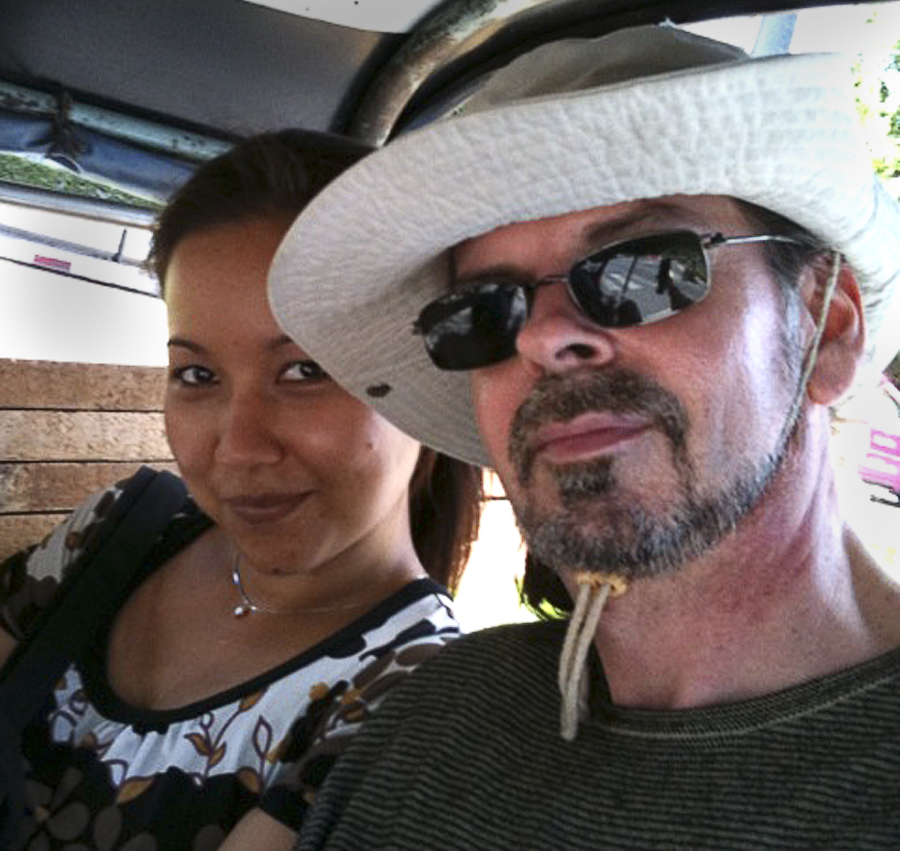
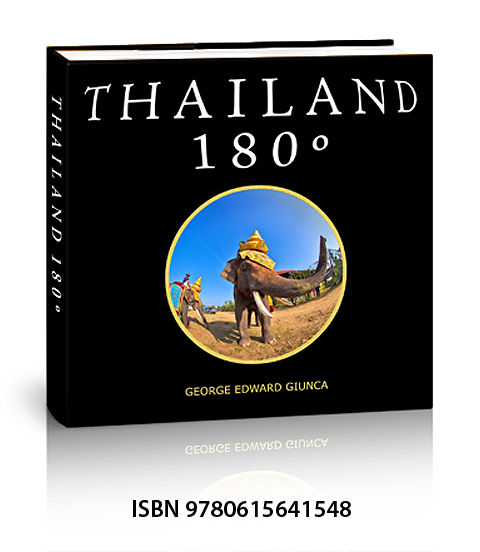
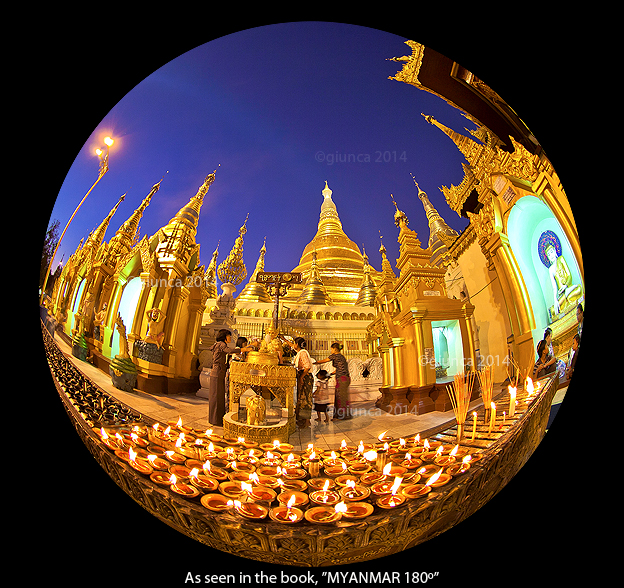
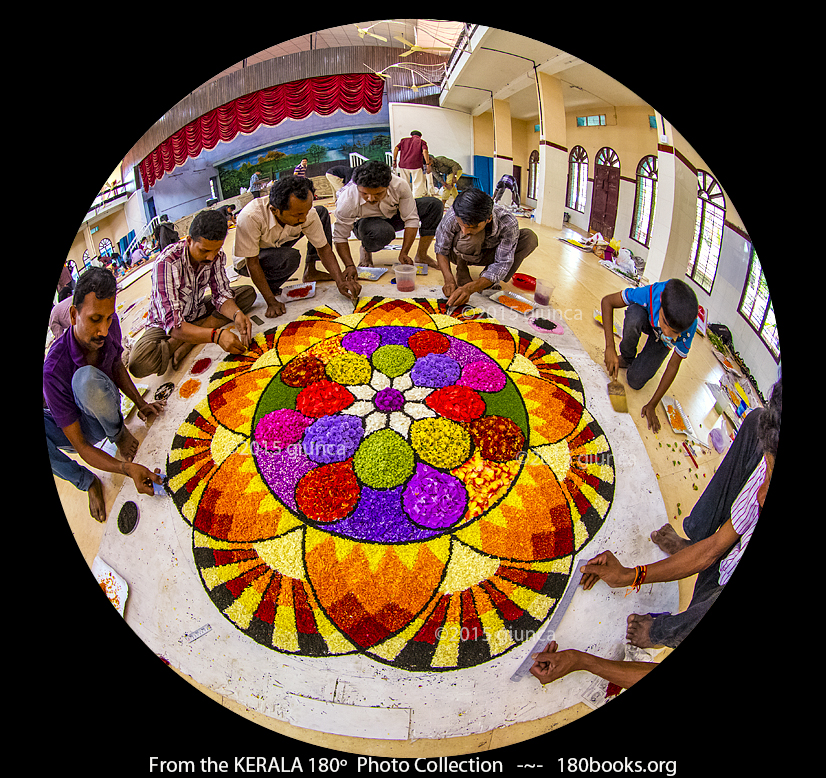
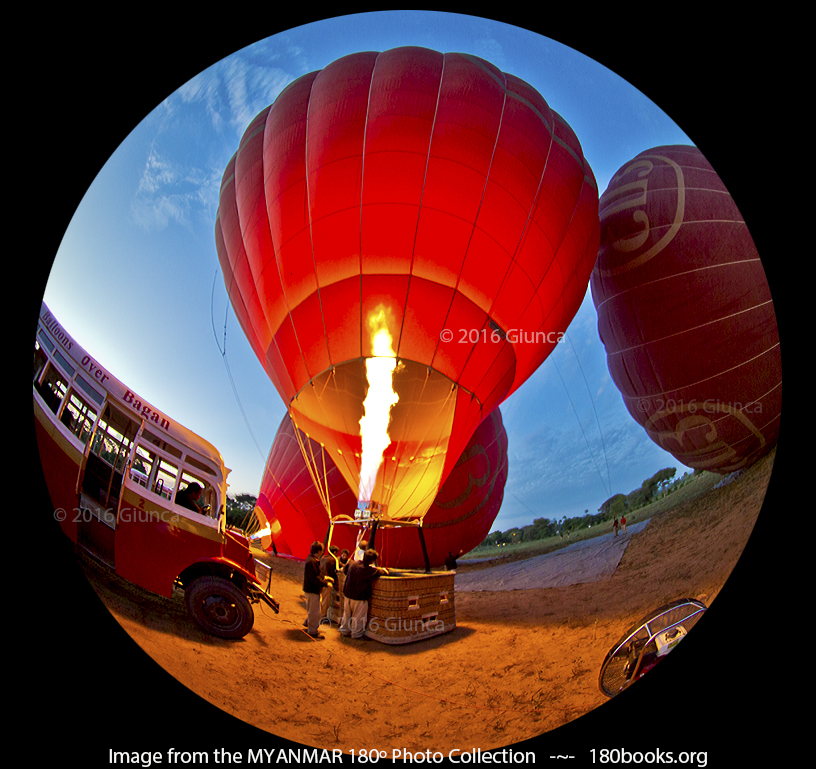
Comment test